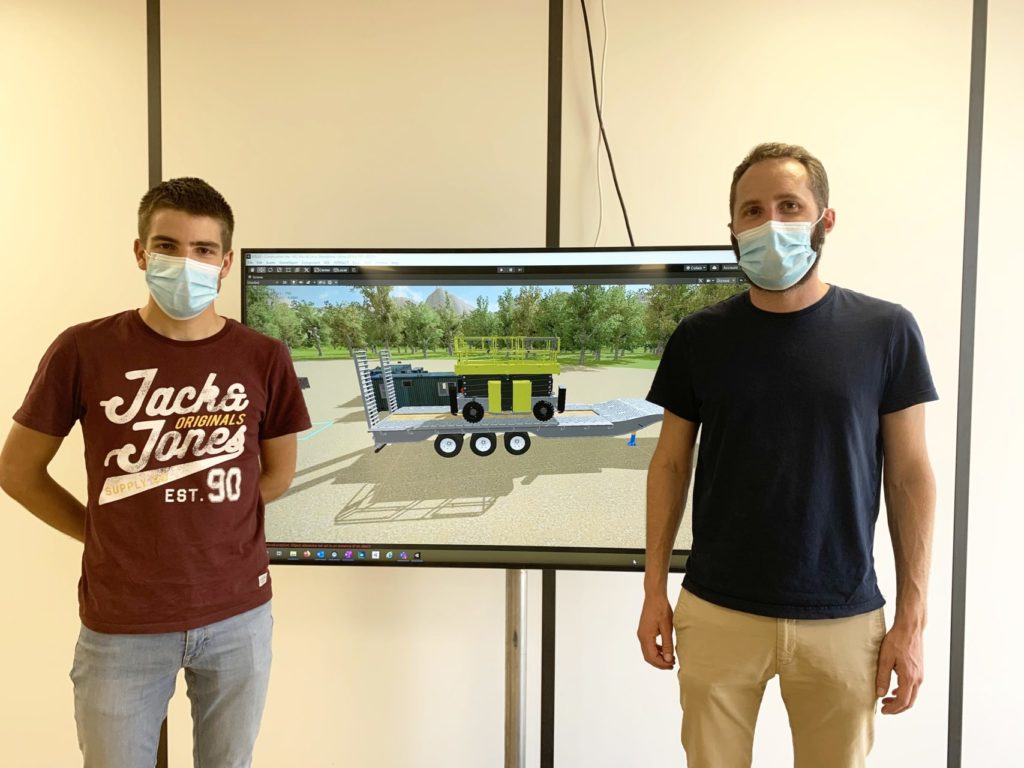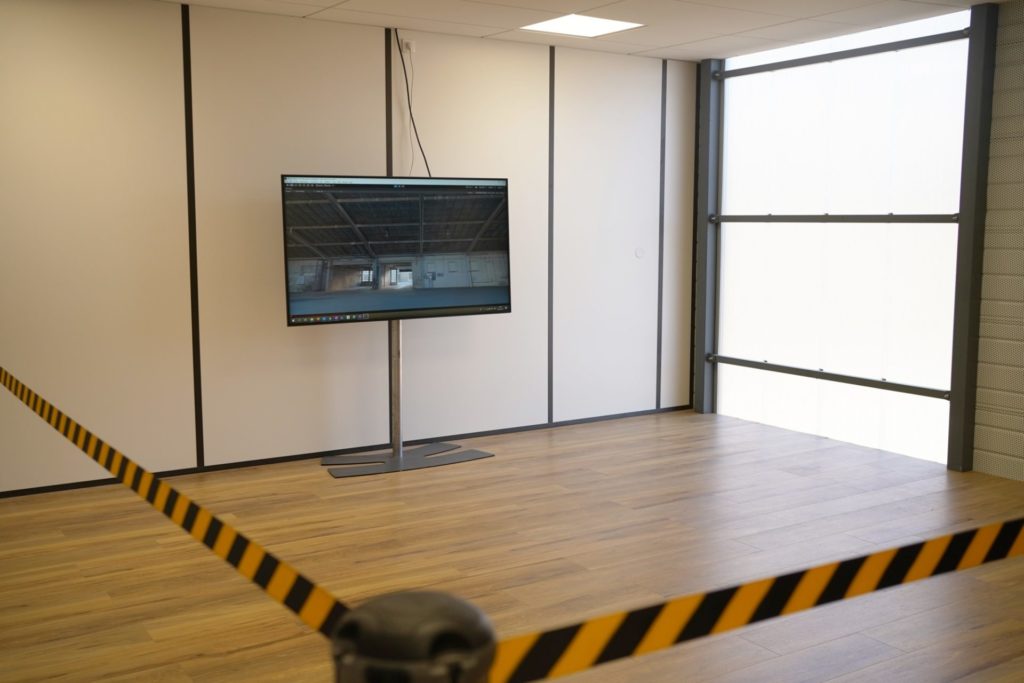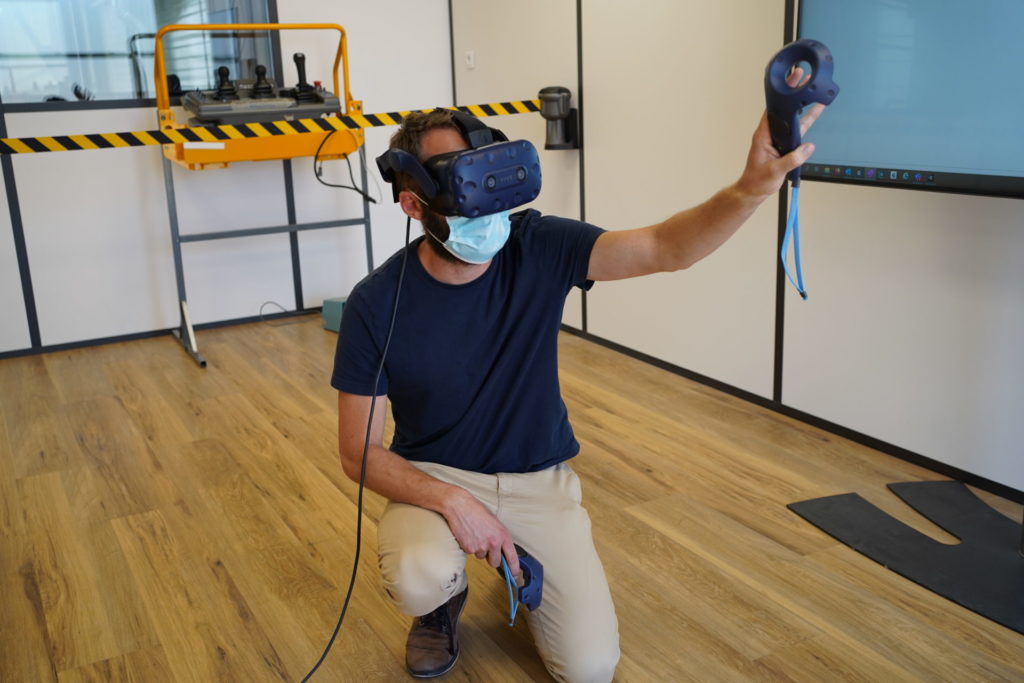With a headset on the eyes, a controller in each hand, Haulotte’s design office uses virtual reality to design tomorrow’s lifting machines more efficiently.

Arnaud Chaigne, head of the simulation and digital validation in the Architecture, Calculation and Simulation Department, and Antoine Navarro, an engineer in the simulation and digital validation division, tell us about the possible challenges and prospects these new tools.
How would you define virtual reality?
Antoine Navarro: It’s a design tool that allows people to be immersed in a virtual world. At Haulotte, we use it to visualize the future machine at scale before making the physical prototype.
Arnaud Chaigne: Computer-aided design has been used for several decades in design offices. Virtual reality makes it possible to go further by allowing many people to project themselves into a machine that will arrive in 6 months. We get feedback from the various departments, production, marketing before the prototype is made.
What does it look like in concrete terms?
Antoine Navarro: It’s a virtual reality headset, connected to a computer and two controllers, used in a small room of 5 by 5 meters, which we call the game space. The user puts the helmet on his eyes, and thanks to the joysticks, he can move around the machine, go up in the basket, see the different components.

At what stages is virtual reality used at Haulotte?
Antoine Navarro: It is mainly used in the early design phases in the engineering department to conduct design reviews and project reviews and choose scenarios for the machine’s architecture. For example: should the engine be placed at the front or the back? With virtual reality, the various parties involved can decide this type of question very early on in the design of the future nacelle.
Arnaud Chaigne: We also work with the production department to validate the accessibility of tools during the machine assembly phases. We run scenarios on the use of assembly stations. With virtual reality, the operator will be able to visualize how to assemble the components and check, for example, whether the necessary tool will fit. Finally, we work with the marketing department to present the future machines to customers and get their feedback early on in the project.
How long has virtual reality been used at Haulotte?
Antoine Navarro: Its use is relatively recent. We invested in equipment at the beginning of 2020. Virtual reality has been used for a long time in the automotive industry, but it was democratized in 2014 with the first Oculus and HTC Vive headsets. I started working on the subject as part of my apprenticeship at Haulotte while in engineering school. We did some monitoring, then built a business model before investing in tools.
Arnaud Chaigne: Today, we are working with virtual reality on nacelles available by 2022-2023. We are still in the test phase.
What are the first benefits of using virtual reality?

Antoine Navarro: The first benefit is the quality of discussions between employees. In front of a full-scale model, arguments make it easier for everyone to justify their choices, especially between the production and design offices. It is much more concrete and realistic. It allows us to take into account the notions of perspective and size, for example. And it allows for a better understanding of the challenges and difficulties of other professions. Studies have shown that people develop their job reflexes more with virtual reality than a 3D model projected on a screen. And the fun aspect of these tools allows people to be more involved.
Arnaud Chaigne: The other benefit is productivity and quality. Virtual reality will allow us to make fewer physical prototypes of machines and arrive at more optimized machines. As iterations are less costly in virtual reality, we can do more and reach the right compromise by testing more possibilities. The goal is always to have better and more complete machines.
What are the following developments envisaged with virtual reality?
Antoine Navarro: Very shortly, virtual reality will allow us, for example, to provide training for maintenance technicians. Before the machine is manufactured, they will train and discover the critical stages of maintenance. The training could be extended to production operators. They will be able to train on specific steps before going to the production line.
Arnaud Chaigne: We will be able to equip our subsidiaries with virtual reality so that customers can visualize the machines before buying them. Training will also be provided for end-users with driving simulators. We are also monitoring augmented reality, which is developing in the industry. Thanks to connected glasses, production operators or maintenance technicians will be assisted remotely by receiving information on the glasses.
